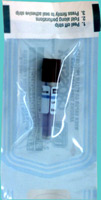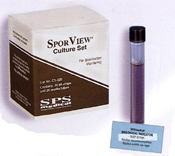
If growth is noted on the autoclaved spore strips, try increasing the run time. After the kill cycle is completed, open the bag and pull on the string to retrieve the spore strip for incubation. Thread the string out of the top of the bag before you tie it with autoclave tape. Bury the tube in the center of the load as you build it. Tie a string around the neck of the tube. To remove the spore strips from the biohazard bag without exposure to the contents, place the fresh spore strips inside of a glass screw cap tube. The spore strips are incubated with the non-autoclaved strips. The spore strips are placed in the center of a typical load and run through a sterilization cycle. The most common method of testing is using commercially available test indicator kits with spore strips (usually Bacillus stearothermophilus). Before placing new autoclaves into service, killing effectiveness testing must be completed.

Hot glassware and scalding liquids will cause burns and serious harm.Īutoclaves used for pathogen kill-loads or clean glassware sterilizing cycles, should be routinely tested once per month for killing effectiveness.
Spore testing requirements full#
Let liquid loads stand in an out-of-the-way place for a full hour before touching with ungloved hands. Be alert for autoclaved liquid bottles which are still bubbling.Remove the load and let the glassware cool for 15 minutes before touching it with ungloved hands. When removing items from the autoclave, wear a rubber apron, rubber sleeve protectors, heat resistant mitts and a face shield.Before removing autoclaved items, wait 5 minutes for loads containing only dry glassware, and 10 minutes for autoclaved liquid loads.Wear heat-resistant gloves when cracking the autoclave door open after a run.Make sure the door of the autoclave is fully closed and the correct cycle has been selected before starting.Individual glassware pieces should be within a heat resistant plastic tray on a shelf or rack, and never placed directly on the autoclave bottom or floor.

Don't load plastic materials that are not compatible with the autoclave.



 0 kommentar(er)
0 kommentar(er)
